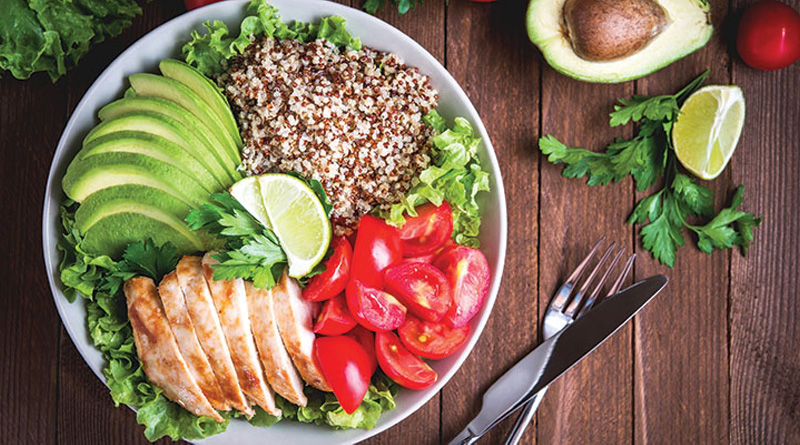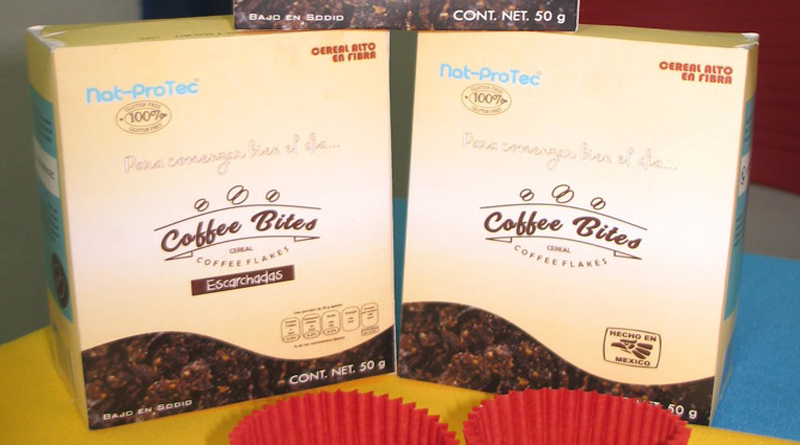Delivering multiple benefits that align with consumer concerns will increasingly be the basis for future success in health and wellness.
Everyone likes to track trends. But the only trends that matter are the ones you can connect your products to and that make a lasting difference to your business.
The questions you need to ask yourself when you are evaluating trends to pursue include:
Will it enable you to get more volume, either by revamping existing products or by creating new segments and categories with new products?
Will the trend yield better prices and profit margins?
Will it stick around? No company can afford to connect its strategy to a trend that will run out of steam two years from now.
For 20 years, we have sifted through data from nutrition science to consumer sales to identify the trends that will meet the criteria above. Here are a few of them …
Plants: Powered By Health Halo & Convenience
People love plants. With their “naturally functional” halo, consumers of all ages want to eat more of them, but in more convenient forms than in the past. And contrary to what is often claimed, we’re not all turning into vegetarians and vegans. In fact, Americans are more likely to be following a keto diet than to be vegetarian, according to the annual consumer survey from the International Food Information Council (IFIC).
IFIC found that the number of people saying they followed a vegan or vegetarian diet shrank between 2018 and 2019. By contrast, the appeal of a ketogenic or high-fat diet has doubled.
A recent Gallup report found that just 5% of Americans identify as vegetarian and 3% as vegan—numbers that have barely changed since 2012. It’s a similar picture in most western markets.
Evidence from consumer research indicates people of all ages—not just millennials—want to eat more plants. The USDA’s Economic Research Service found millennials spent only slightly more per capita than generation X on fruits and vegetables, and much less than baby boomers. People have always wanted to eat more plants, and now that they’re available in more convenient forms, in snacks and in supplement powders, they can. In fact, creative product development is propelling the plant-based trend, not vegetarianism and veganism.
Advances in food technology mean that a host of plant-source ingredients—including chickpeas, broccoli, cauliflower, beans, and beetroot—can be used in a wide array of products.
Convenience is more important to millennials than to other age groups. According to the USDA, they spend the largest percentage of their food budgets in categories containing a lot of ready-to-eat foods.
Finding more convenient ways to help people eat vegetables is a long-term growth opportunity for companies big and small.
There are six strategies in plants: 1) plants as heroes, 2) plants blended with “good” carbs, 3) “real vegetables” replace starchy carbs, 4) plants blended with meat, 5) plant-based meat alternatives, and 6) plant-based dairy alternatives
Strategies 2, 3, and 4 have the most potential for growth and for creative product development. For example, the Caulipower pizza brand uses cauliflower in place of grains for its pizza crusts. In 2019 (year two of its existence), it is on track for $100 million in retail sales. It’s a great example of bringing together the health halo of plants with the benefits of extreme convenience, good taste, and gluten-free.
Bakery companies in Europe—such as Fazer in Finland—are finding success with breads that have a 30% vegetable content, based on vegetables such as beetroot, carrot, zucchini, beans or sweet potato. People suspect they should trim their carb intake (to help with weight control), but they love their bread. This strategy is a great way to give them plants as “good carbs” and give people permission to indulge.
From New Zealand to the U.S., makers of beef burgers are using the same strategy as bakers, including a percentage of vegetables in their products.
Selling meat substitutes, such as burgers made with plant protein, is not a plants strategy but a protein strategy focused on converting meat-eaters—the explicit aim of companies like Beyond Meat and Impossible Burger.
Substitute makers are aiming to be “a nicotine patch” for meat eaters, giving them the taste experience they get from meat.
However, what most consumers who are looking for plants want is not meat substitutes but products clearly made of recognizable vegetables.
An example is lupini beans, a traditional commodity product in Portugal, Brazil, and Italy mostly sold in one-pint glass jars. Portuguese company Tremoceira Estrela da Piedade sells lupini beans in traditional formats but has become a big hit selling its beans in burger formats in three flavors. Simple and natural is closer to what most people want.
Fueling the hype, wild claims are made that meat substitutes will displace meat. But these figures are misleading.
One often-cited statistic is that the U.S. market for meat in 2018-19 grew by “only 1%” compared to 9.9% for meat substitutes. But use of these statistics ignores the fact that 1% of $68 billion is worth $680 million in extra dollars spent while 9.9% of $850 million is only $100 million of extra dollars spent.
Americans’ new expenditure on meat still outpaces their new expenditure on meat substitutes by a large ratio.
Meat substitutes have become high risk because of these factors:
A crowded and very competitive niche: barriers to entry are low. In Europe, supermarket own label is already competing hard. In the U.S., Lidl is leading the way with its own meat substitute burger. One Nestle brand in the U.K., Garden Gourmet, has already been pulled from the market.
Disconnected from consumer beliefs: for people looking for “natural” and “least-processed” (which is what consumer behavior has been teaching us for 20 years) meat substitutes, with their long ingredient lists, fall short.
Environmental arguments are getting pushback from those who point to the carbon sequestration benefits of regenerative agriculture and grass-fed livestock. “Meat reinvented” for better planetary health is a real strategy.
Rug pulled from under the human health argument by the debate now taking place in the media between scientists who say that the advice to eat less meat is not supported by any serious evidence and those who say that the results from nutritional epidemiology are “good enough.” Confused, people will look at both sides and make up their own minds.
Entrenched cultural position of meat
The eventual debut of “cultured” meats, produced by fermentation by companies such as Aleph in Israel, Memphis in the U.S. and many others which are working hard to mimic “real meat” much better than plant-based can.
Thanks to excellent PR, strong media support, and vast financial resources, meat substitutes will become an important niche in the market. But the size of the niche will be far below the predictions that some are making.
Digestive Wellness: The Trend that Creates Opportunity
People often look at plant-based milk substitutes, such as almond, as a part of the plant-based trend. In fact, it’s digestive wellness that is the key driver for consumers of plant milks.
The U.S. plant milk market’s best days are behind it. Sales of lactose-free dairy milk have almost caught up with those of almond milk and are now growing at twice the rate of the total U.S. plant milk market.
According to IRI data, U.S. sales of all plant milks were $1.098 billion in the seven months to July 2019, with a growth rate in the period of 4.5%. Sales of lactose-free milk were $732.5 million with a growth rate of 15.4%
This means that in terms of actual dollars of new sales in the first seven months of 2019, consumers spent an additional $97.941 million on lactose-free dairy milk compared to an additional $47.176 million on plant milks.
Lactose-free milk will soon be as big a category as almond milk, which accounts for almost 80% of all U.S. plant milk sales.
Dairy’s fight back has been led by the Fairlife brand, an ultra-filtered milk featuring a higher protein content (13 grams per 240 ml vs 8 grams for ordinary milk), no lactose, and half the sugars of regular milk (6 grams compared to 12 grams).
Fairlife has almost single-handedly taken away almond milk’s taste and health advantages, and added a couple more competitive advantages of its own.
For companies looking at plant-based desserts, yogurt, and other segments, the good news is that they are just at the beginning of what could be a 10-year growth cycle that will take them to a similar level of business to plant milks.
Not too long ago, dairy “owned” the benefit of probiotics for gut health, but probiotics now go far beyond dairy.
What seems to work best for consumers is offering bacteria in a product format that has a credible probiotic/fermented backstory. That’s why kombucha has reached $1 billion in annual sales, but probiotic hot tea and probiotic breakfast cereals have largely disappointed.
Fewer brands mention prebiotics—the soluble fibers such as inulin—on their label. That’s a pity, because prebiotics have an excellent scientific basis, enough to secure a very rare health claim approval from the European Food Safety Authority (EFSA). But for companies that choose to use prebiotics in their brands, what matters is that they deliver a feel-the-benefit effect, which is one of the most compelling reasons for someone to keep buying a product.
It’s possible that 2020 will turn out to be “the year of inulin,” and that’s because of both the digestive wellness and sugar reduction trends.
Sugar is the Devil
Fear of sugar, the ultimate “bad carb,” is now mainstream. A massive 80% of U.S. consumers say they are limiting or avoiding sugar in their diets, and there are similar levels of concern in Europe and South America.
The surge in interest in keto diets has given sugar reduction an extra boost. Even people who aren’t strictly keto can take away the diet’s message to drastically cut sugar consumption.
Many cereals and granolas are discovering that they can boost sales by using inulin in order to offer consumers both a digestive wellness message and a low-sugar promise. The Troo Granola brand, for example, uses inulin syrup in its products because it serves both as a prebiotic and a sweetener, giving a more appealing taste to consumers while keeping the sugar low.
These twin benefits have led to a surge in demand for inulin. The number of products launched each year featuring inulin has doubled to over 2,000 a year between 2012 and 2019.
In “healthy” categories, such as yogurt, sugar reduction is fast becoming a category standard. What’s even more interesting is how the confectionery category is trying to reformulate products so consumers can indulge without the guilt. This was the foundation of the Halo Top ice cream brand’s success and many other brands are pursuing a similar route.
In Australia, the fast-growing Noshu brand of sugar-free donuts and cakes focuses solely on offering only “decadent products” that are sugar-free, gluten-free and also often low-carb, such as the company’s “Guilt-Free Donut.” Noshu claims to use “natural sugar substitutes” such as coconut nectar, honey, rice malt, and maple syrup, as well as a blend of stevia and erythritol.
Emerging Mood
Food and beverage companies, as well as ingredient suppliers, casting around for emergent areas that may spur innovation opportunities and generate growth, keep turning their attention to the area of mood.
The biggest challenge is finding an ingredient that can be added to a food or beverage that is: 1)legal, 2) possible to include in sufficient dosages to deliver the benefit, 3) delivers on taste expectations, 4) delivers on consumer expectations of “feel the benefit,” and 5) makes sense in the product.
One of the few examples of success has been in Japan, where confectionery company Ezaki Glico’s stress-reducing “Mental Balance Chocolate GABA,” launched in 2005; it’s still on the market and earning $50 million a year in retail sales.
GABA (gamma amino butyric acid) has been shown to increase mental alertness and reduce stress. Normal chocolate naturally contains 9 mg of GABA per 100 grams; Mental Balance Chocolate GABA contains 280 mg per 100 grams.
The main focus is on nootropics, substances that enhance mental performance, often naturally found in foodstuffs including eggs, green tea, spinach, and coffee (caffeine being a nootropic in the latter).
Getting the most attention right now is cannabidiol (CBD). Although there are serious regulatory (and taste) challenges, it’s an ingredient that’s easily understood by consumers and they are willing to try new products.
U.K. startup Nooro’s Mind Fuel snack bar with CBD, which launched in retailer Planet Organic, became the fastest-selling snack product launch for the chain in the last 10 years. Each bar contains 25 mg of organic CBD from a small independent U.K. grower; it also contains inulin.
In New Zealand, the Ārepa brand of nootropic drinks offers mental clarity and calmness based on the intrinsic benefits of New Zealand blackcurrant and New Zealand pine bark extract Enzogenol. Both have shown good results in clinical studies. Ārepa is sold online and in supermarkets, health food stores, and cafés. “We found the more stressed the individual, the bigger the effect was of our product,” said founder Angus Brown. “So we decided to market to people in those moments; so in hospital cafes, student cafes, and corporate cafes. We have a hospital that sells more than one of the biggest supermarkets.”
Fat Reborn
The International Food Information Council (IFIC) 2019 consumer survey of Americans illustrates how dietary fat is losing its association with body fat and weight gain; 50% of respondents named sugar and carbohydrates as the source of calories most likely to cause weight gain, versus just 13% who named fat. That’s a huge turnaround in just less than a decade; back in 2010, fat was the dietary demon, and 70% of Americans were trying to reduce their fat consumption.
The shift in scientific opinion to the point where it’s clear there’s little evidence of any cardiovascular disease risk from saturated fat is something that health-aware consumers can easily find on the Internet. Other factors that are influencing people include:
Approval from the American Diabetes Association, which called very high-fat, low-carb eating, such as keto, a “viable” diet to tackle diabetes;
The success that many physicians have had with higher fat diets in reversing Type 2 diabetes.
Not only are sales of full-fat dairy, butter, and avocado being helped along by consumers’ growing acceptance of fat, but new higher fat products are also emerging, such as:
FattBar: Promoted as “heart healthy,” this range of high-fat bars is made from nuts, cocoa and chicory. Vegan and gluten-free, they are sold on Amazon and in Whole Foods and other stores in Europe.
Butter Coffee Bombs: This brand is a good example of how a product type made at home by enthusiasts can emerge into packaged grocery. Connected to low-carb and keto, “fat bombs” are all about ingredients like coconut oil, butter and ghee, cocoa powder, and chia. They deliver a pleasurable taste and a filling snack. You might not eat them, but gen Z does. This brand also contains collagen, adding to the potential skin health benefits of fat bombs, which are one reason why women aged 15-20 are among their biggest fans.
It used to be the case that successful brands were focused on delivering a single benefit. But as views about health have become more multifaceted, brands need to deliver more than one benefit to satisfy consumers’ concerns. A good example is Koia, a brand of plant-based, lower-sugar protein drinks, whose sales are approaching $20 million in less than four years since launch. The company has a keto line with only 5 grams of net carbs and 12 grams of protein from brown rice protein, pea protein and chickpea protein—and no added sugar.
Koia checks off plants, protein, lower sugar and fewer carbs—all among the top-10 long-term consumer trends. It’s this kind of approach—offering several benefits in a way that makes sense to the consumer—that will increasingly be the basis for future success in health and wellness. Source: Nutraceuticals World










